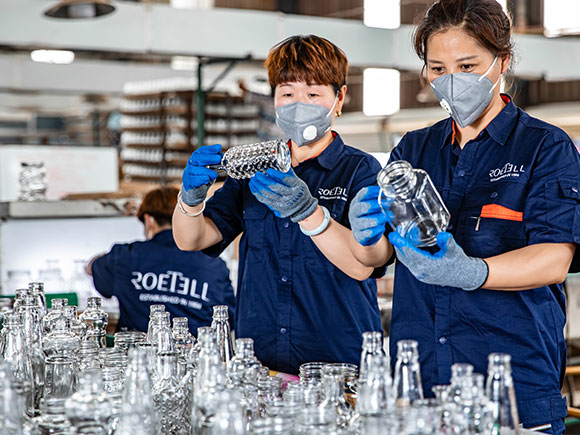How Glass Bottles Are Made
facility is located in a growing region of Xuzhou, China, and manufactures more than 400,000 glass bottles per day. Based on the modern bottling factory and experienced know-how team, our bottle production is intended for the premium end of the beverage, food and cosmetic industry.The manufacturing of glass bottles comprises a number of stages. They include crushing and mixing of raw materials, batching, melting, pormation processes, annealing. The manner in which these steps are performed may be adjusted depending on the glass bottle product.
Full Capacity in Our Glass Bottle Manufacturing Plant
5000+
- Instock styles -
the foremost advantage of stocking a huge amount of molds in-house is the flexibility. One factory can hardly meet all your requirements.
700,000+
- Instock styles -
the foremost advantage of stocking a huge amount of molds in-house is the flexibility. One factory can hardly meet all your requirements.
8
- Instock styles -
the foremost advantage of stocking a huge amount of molds in-house is the flexibility. One factory can hardly meet all your requirements.
How to Make Glass Bottles Step by Step

Sand

Soda ash

Limestone

Cullet
#1 Raw Materials For Making Glass Bottles
Raw materials that we primarily use in the manufacture of glass bottles are sand, soda ash, limestone and cullet.These materials are mixed in a specific ratio to make soda lime glass. Other types of glass bottles may, however, require additional inputs. For instance, dyes and chemical compounds may be added in the manufacturing process to produce colored bottles or heat-resistant borosilicate glass.

#2 Batching Process for Making Glass Bottles
Once the raw materials are gathered and prepared, they are placed in a hopper machine for mixing. The mixture is then put into batching compartments in measured portions. It is from these compartments that it is fed into the melting furnace through a conveyor belt.
Batching is an important phase of glass bottle manufacturing. The mixture portions have to be accurate to ensure consistent quality. Their sizes are determined by the design and the number of bottles to be made.

#3 Glass melting during bottle production process
The melting phase takes place in a heating furnace where the raw materials are subjected to high temperatures of about 1600°C. The water content evaporates and organic matter is burned off while the remainder of the mixture melts to form molten glass. Finally, the molten glass is cooled to achieve viscosity in readiness for the formation stage.
All our furnaces are fully automated. Their temperatures settings are controlled by our engineers from an integrated control room using special software.
#4 Blow glass forming processes
Glass formation involves the molding of molten glass into the desired bottle shapes. First, the viscous mixture is cut into gobs of equal size using a timed blade. The gobs fall into separate slots of an individual section machine. Each slot contains a shaping mold.
The final shape is achieved by either Blow and blow method or Press and blow method.
- Blow and Blow Process
In the Blow and Blow method, compressed air is used to shape the bottle. It is blown onto the molten gob and pushes it to take the shape of the mold. This initial shape is referred to as a parison.The parison is then flipped to an upright position, reheated and injected with more air to fully define its shape.
This method is used for narrow glass bottles such as beer glass bottles , wine glass bottlesor soda glass bottles.

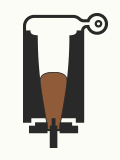
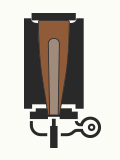
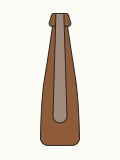
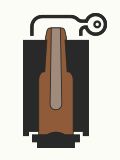
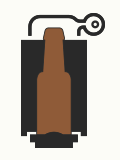
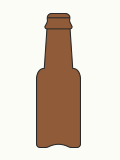
- Blow and Blow Process
In the Blow and Blow method, compressed air is used to shape the bottle. It is blown onto the molten gob and pushes it to take the shape of the mold. This initial shape is referred to as a parison.The parison is then flipped to an upright position, reheated and injected with more air to fully define its shape.
This method is used for narrow glass bottles such as beer glass bottles , wine glass bottlesor soda glass bottles.








#5 Annealing and Conditioning Processes in Glass Bottle Manufacturing
Surface treatments are performed on the exterior of glass bottles when they are complete. They can be used for decoration, labeling and even protection against abrasion. We have specialized equipment and know-how in performing various treatments including:
- Bottle and closure design
- Dispensing and dosing systems
- Ergonomics and form factors

#6. Surface Treatment
After the rigorous process of formation, the glass bottles are allowed to cool before being moved into an Annealing Lehr. It is a long kiln that has controlled temperature settings. In it, the glass bottles are slowly reheated and then gradually cooled again to a temperature below the strain point of glass.
Annealing is important as it minimizes the internal stresses in the glass bottles that can lead to shattering. It also ensures an even settling of the glass material.
We control the annealing process to:
- Short-necked
- Long-necked
- Balloon-like
- Slender
- Rounded
- Cornered
Professional Glass Bottle Manufacturers From China
Surface treatments are performed on the exterior of glass bottles when they are complete. They can be used for decoration, labeling and even protection against abrasion. We have specialized equipment and know-how in performing various treatments including:

